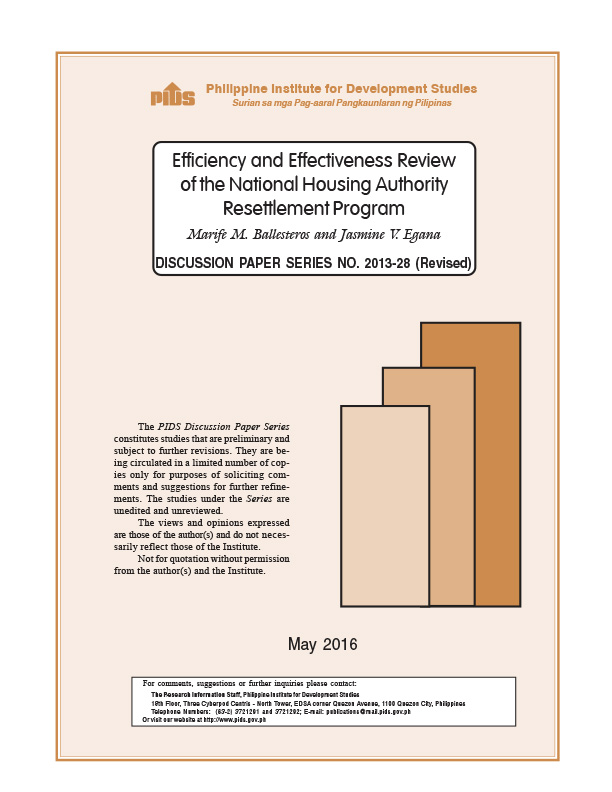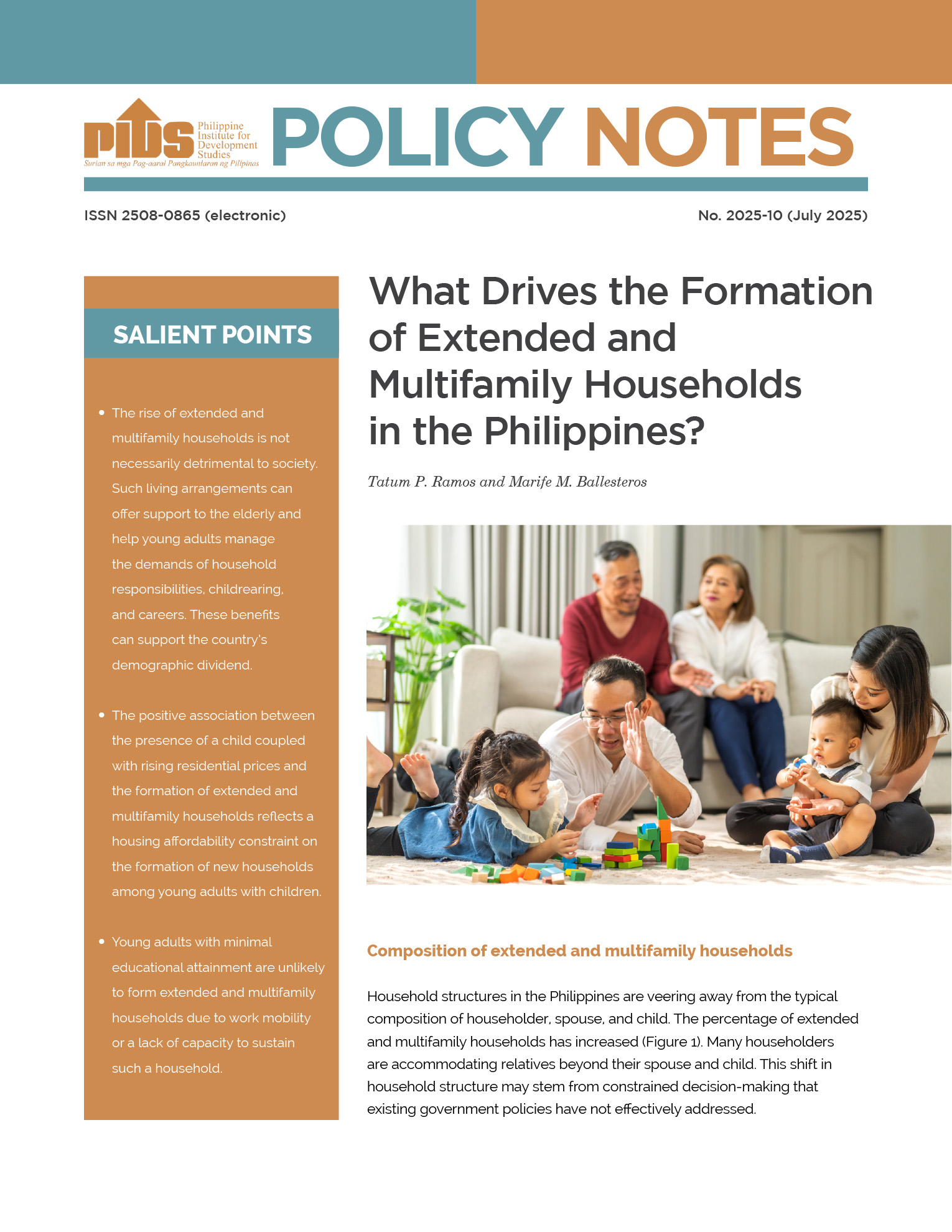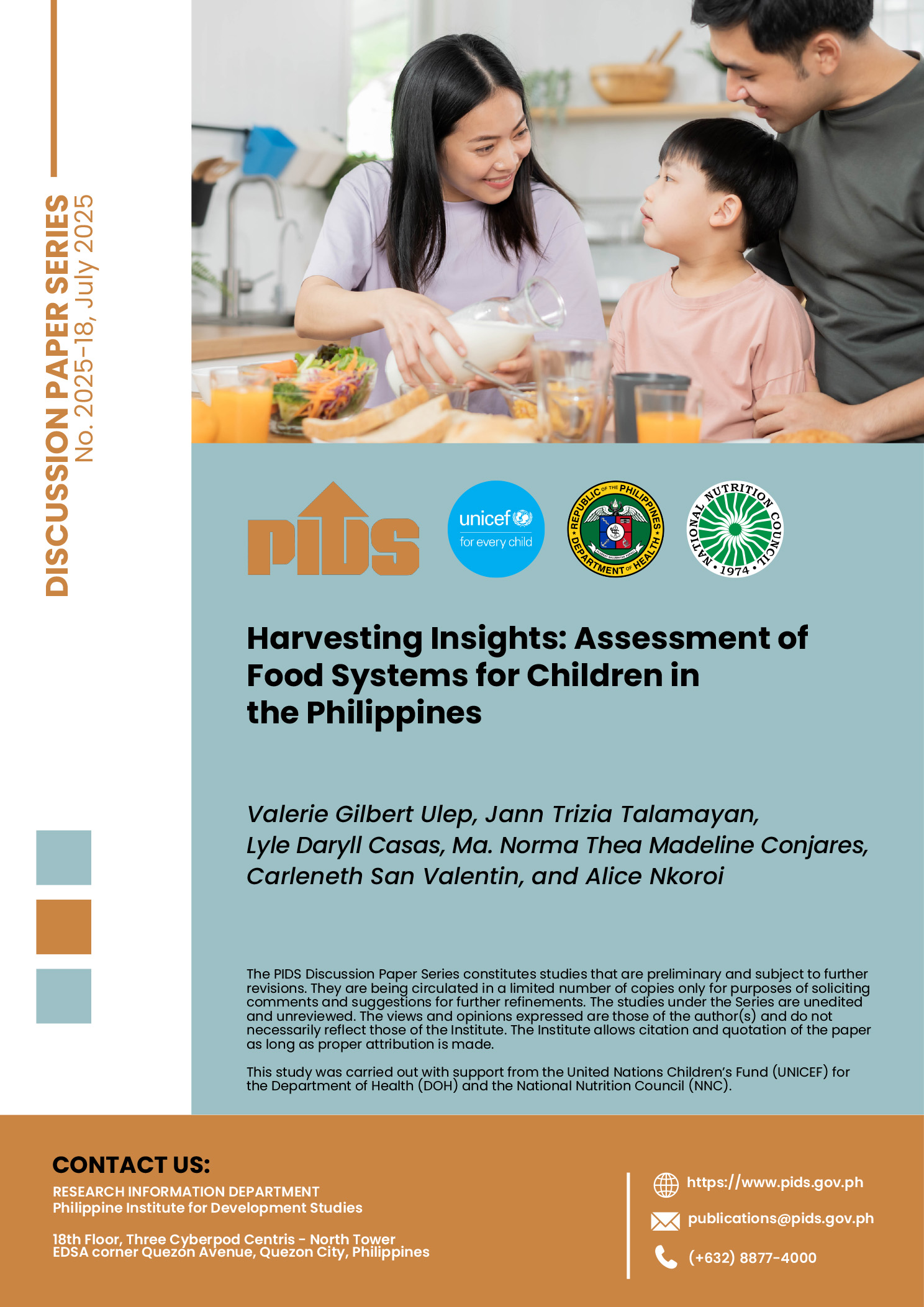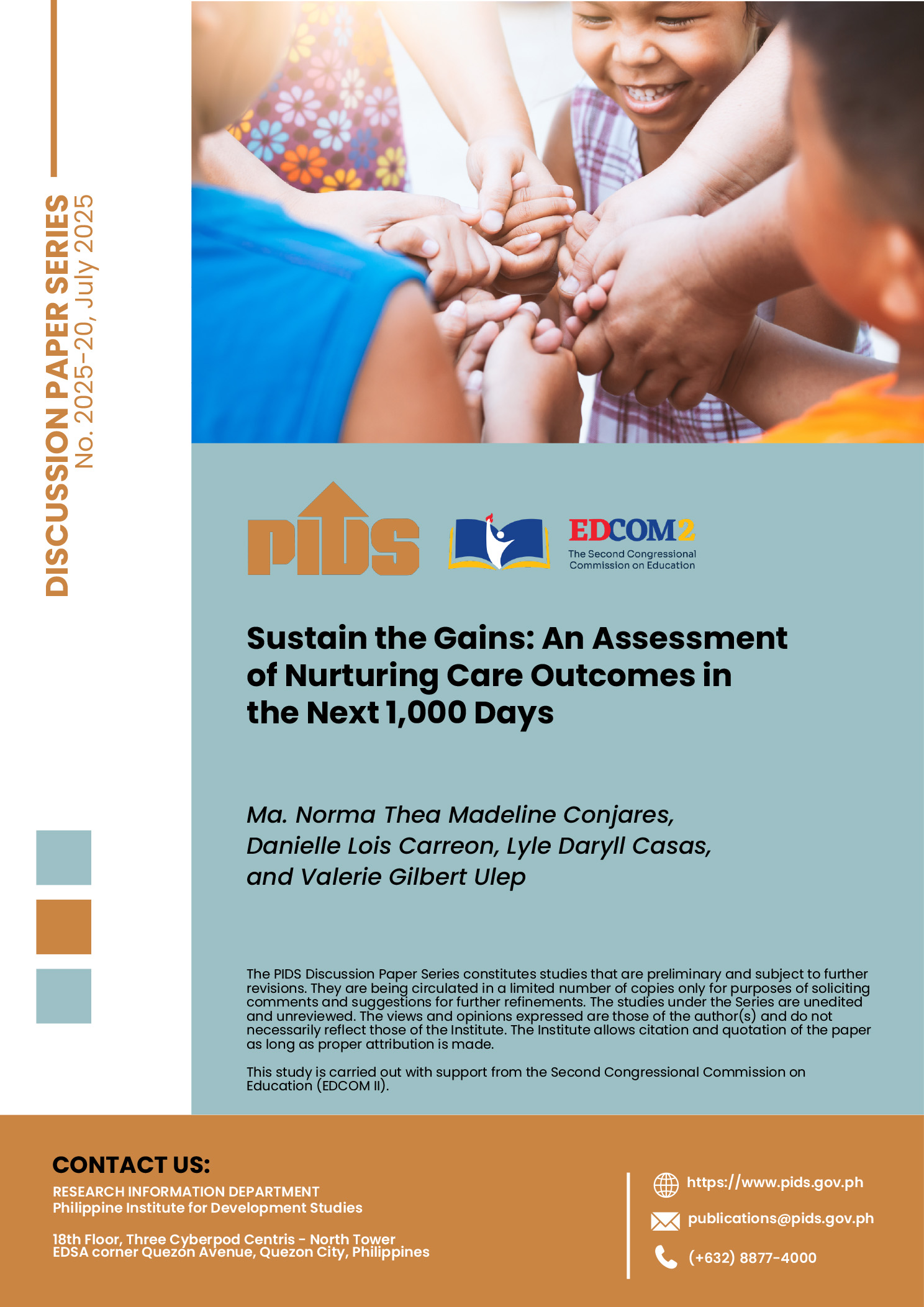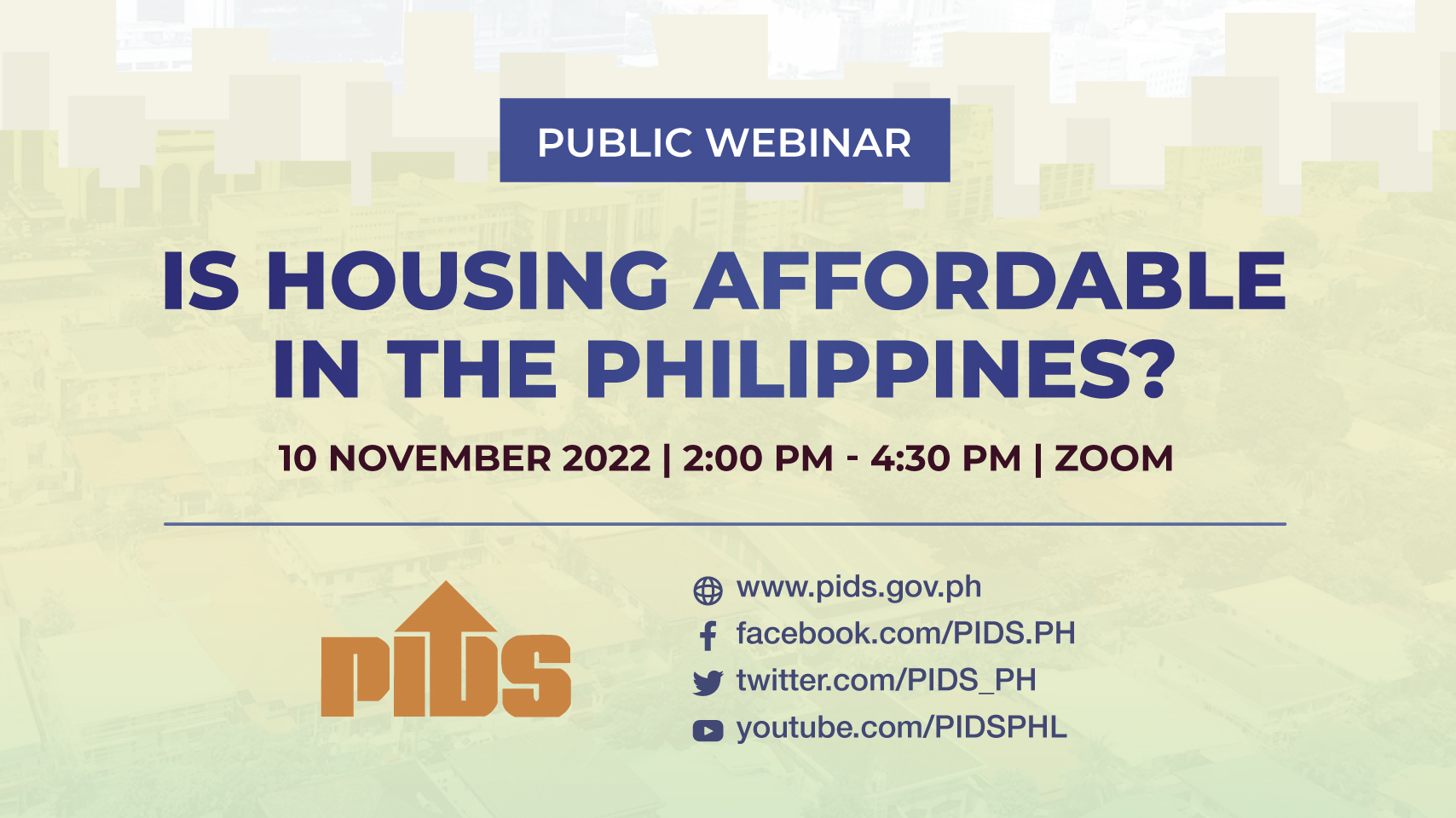This paper examines the effectiveness and efficiency of the National Housing Authority's (NHA) implementation of the resettlement program. The review focuses on the recent operations of NHA for the period 2003-2011, which covers one of the largest resettlement projects of NHA involving about 93,000 families for the North and South Rail infrastructure project. During this period, the resettlement program received about 85 percent of NHA budget. NHA has executed the development of 88 resettlement projects nationwide, of which 45 project sites are located in Metro Manila and the peripheral areas (or the Greater Manila Area) and 43 in the regions. The dominant scheme is the Completed Housing Project (CHP) with more than 70 percent (32 sites) of total projects constructed through NHA partnership with private developers. The balance consists of Incremental Housing Projects (IHP) (6 sites) and mixed projects (7 sites), which combined the CHP and IHP methods.
By location, there are more in-city projects (68 sites) than off-city projects (20 sites). However, in-city projects are only found in the regions and provinces outside Metro Manila. No resettlement site for affected families of North and South Rail project was developed in Metro Manila. Based on actual cost per unit, it cost less to produce a housing unit using the CHP scheme than IHP by about 17 percent per unit, on the average. However, cost benefit ratio analysis shows that IHP is more cost effective considering the value of developments and the greater participation and investments of households and community in the maintenance of housing estates. Between in-city and off-city CHP projects, the average total project cost is higher for in-city projects compared to off-city projects mainly due to higher cost of land, but in-city projects are more sustainable and acceptable to both households and local government units (LGUs).
It is recommended that NHA adopt a combination of in-city and incremental housing for its resettlement projects. However, there are necessary conditions that require specific actions not only from NHA but also from other stakeholders to implement this approach. These actions are: (1) that land for socialized housing be made available by the LGU or national government especially in highly urbanized cities such as Metro Manila, (2) that NHA develop a feasible and effective housing model to implement vertical developments in in-city resettlement sites, and (3) that NHA improve the production process for incremental housing.
Citations
This publication has been cited 6 times
- Alananga, Samwel, Charles Lucian, and Moses Mpogole Kusiluka. 2015. Significant cost-push factors in owner-built incremental housing construction in Tanzania. Construction Management and Economics,. 33, No. 8, 671-688. Taylor & Francis Journals.
- Ballesteros, Marife M., Tatum Ramos, and Jasmine E. Magtibay. 2015. An assessment of the community mortgage programs of the social housing finance corporation. Discussion Papers DP 2015-41. Philippine Institute for Development Studies.
- Lauer, Hannes, Mario Delos Reyes, and Joern Birkmann. 2021. Managed retreat as adaptation option: Investigating different resettlement approaches and their impacts—lessons from Metro Manila. Sustainability, 13, no. 2, 1-24. MDPI.
- Palagi, Shaye and Amy Javernick-Will. 2020. Pathways to livable relocation settlements following disaster. Sustainability, 12, No. 8, 1-25. MDPI.
- Beato, Beatriz. 2025. New year’s (re)solutions for housing and the urban poor. BusinessWorld.
- Tonette Orejas. 2017. Takeover shows mass housing woes. Philippine Daily Inquirer.

